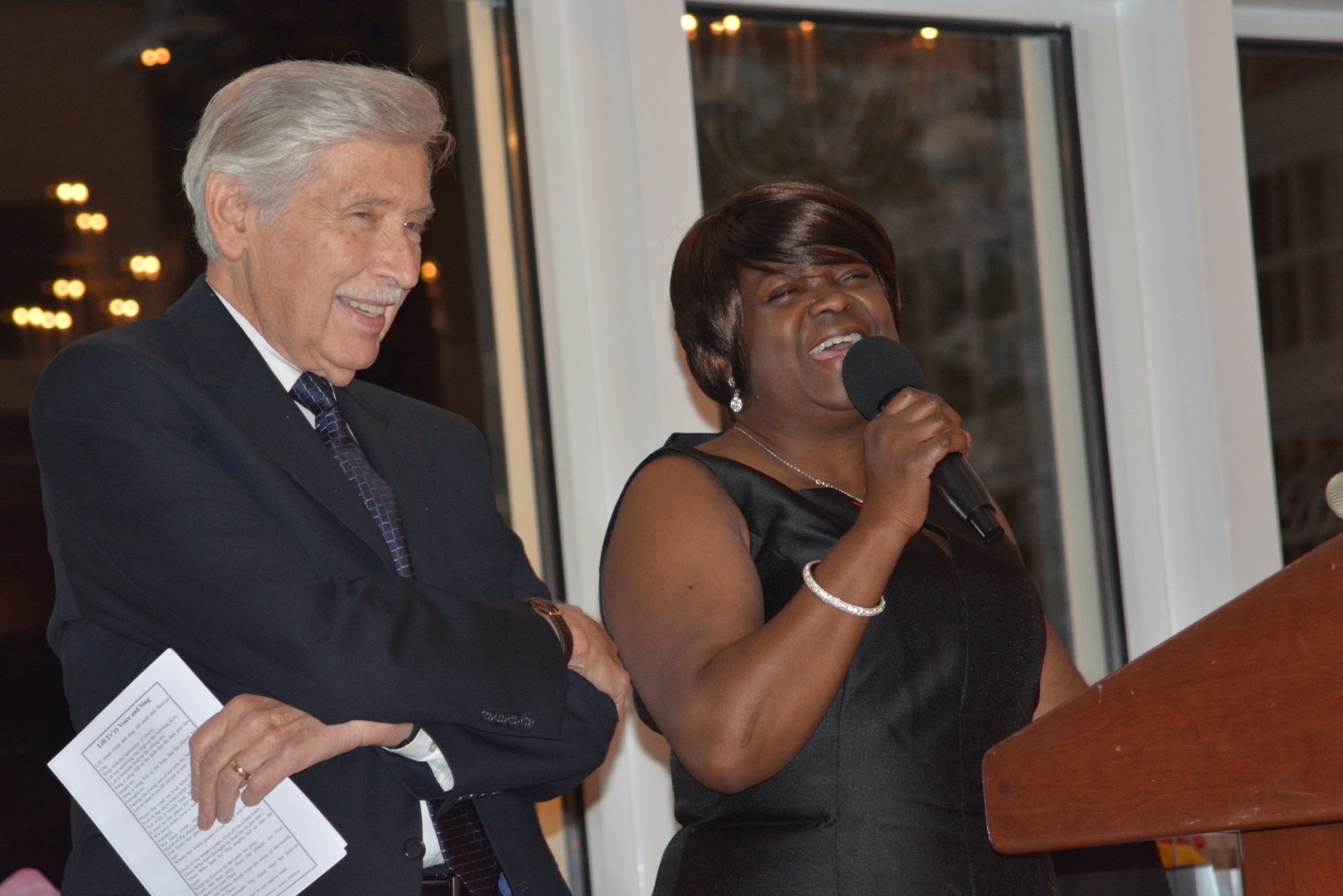As St. Paul AME Zion Church celebrates its 80th anniversary, the church’s members are counting its blessings.
“For 80 years the St. Paul African-Methodist Episcopal Zion Church has been a beacon of light, hope and change in the Village of Great Neck,” Willis Gibson-Lake, a church member, said before a group of congregants gathered at the Coral House in Baldwin on Friday. “Back in the day, the African-American community, from the north side to the south side, was a thriving part of the tapestry of Great Neck. And St. Paul’s membership reflected that.”
This was one part of a weekend-long celebration of St. Paul church’s past, the other being a Sunday morning service at the church. And while members of the congregation said that they may have gotten older, the bonds with God and each other remained strong.
“They’re always open and loving people, they’re very supportive people,” the Rev. Kathleen Edwards, the church’s pastor, said.
“It’s just a big family. Loving the Lord and hopefully loving each other,” Edwards added.
The church began in 1937. Its first service was held in a beauty shop at 86 Steamboat Road, with 16 people gathered under the leadership of a Reverend Fraser. By the 1950s it grew to be a thriving group, where the pews were always filled and chairs were needed to accommodate all the guests.
In 1957, the Rev. John A. Belton led the effort to get a larger house of worship. He discussed the issue with the Great Neck Ministerial Association and 18 other organizations in the community. He spent so much time working to raise money via door-to-door drives, luncheons and breakfasts, that Belton became ill from stress.
Rabbi Robert Widom of Temple Emanuel fondly recalled memories of pastors past. While he was a recipient of the Jeremiah Jiles Meritorious Lifetime Achievement Award, Widom said his relationship with the church went all the way back to Belton.
“He was the first to come and greet me and welcome me to the community,” Widom said.
Eventually the church moved to 1 Potters Lane, followed by 119 Steamboat Road, where it is today.
“In March of 1961, that was the year, I’m told, that Reverend Belton marched from the old building to this new edifice with all of the members singing: ‘This is the house the Lord has made. Let us rejoice and be glad in it,'” Widom said, prompting a wave of applause.
Great Neck had many more African-American owned businesses and families in the community in the 1960s, with many of the families being there since the 1920s and 30s, according to Julia Shields, chairwoman of the church’s Board of Trustees.
Then in the 1970s and 80s, she said, many of the businesses were bought out and many members had to leave. At the church’s peak, there were over 250 dedicated members. Today it’s closer to 60.
“Everything changes, nothing remains the same,” Shields said. “It will never be that type of situation in Great Neck anymore because most of the people have relocated and they couldn’t afford to stay here.”
Tillman Scott, a trustee, has been with the church for over 45 years. He said that membership is down a lot and that around 90 percent of the church’s members are older. “A lot of them moved away, a lot of them passed away, and we have no kids among us,” Scott said.
Still, he finds reason for optimism. The church has survived for eight decades, after all.
“That’s a long time. It’s a pleasure to see the church still around in 80 years — you know a lot of churches didn’t make it,” Scott said.
“Me, as a member, I really love St. Paul,” he added. “I couldn’t see myself leaving St. Paul and going any place else.”
Today, St. Paul still finds itself involved in the community and trying to reach a new generation. The congregants hold celebrations for women’s day, attend conferences to get new ideas from younger people, and host the Martin Luther King Jr. Day services with various other religious institutions, to name a few things.
And activities like these, Edwards said, have helped bring Great Neck closer to together.
“It helps us have an open relationship with one another, to make us friendly towards one another and [show] that we’re not very different,” Edwards said.



